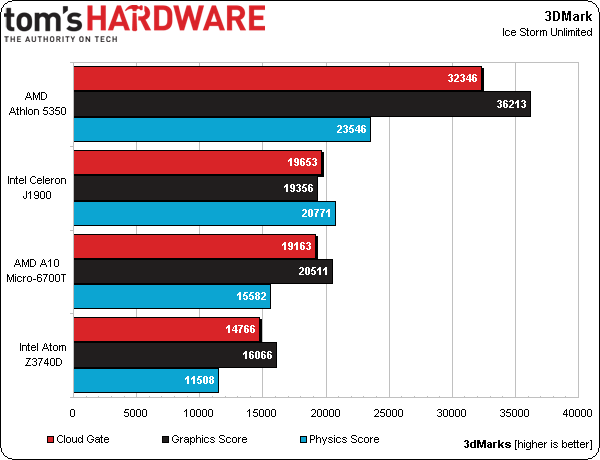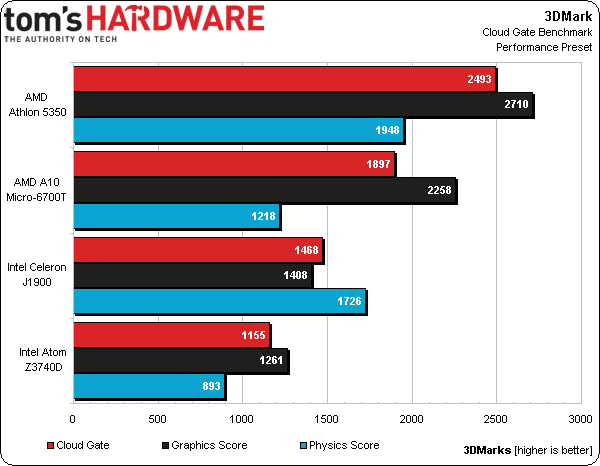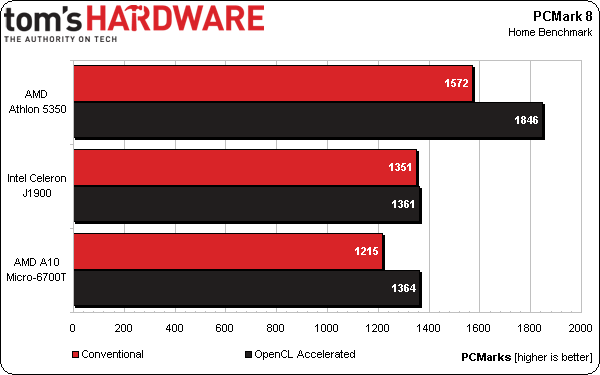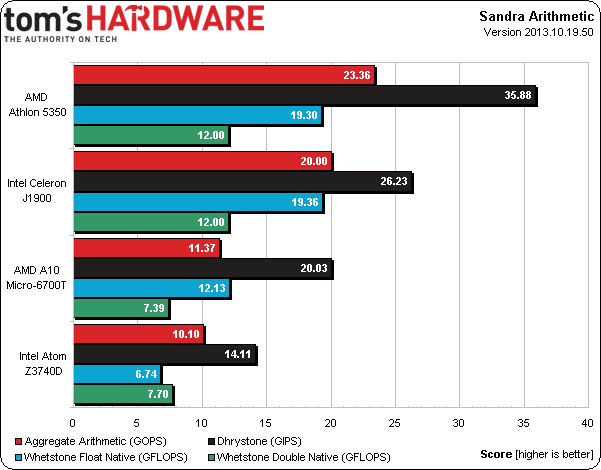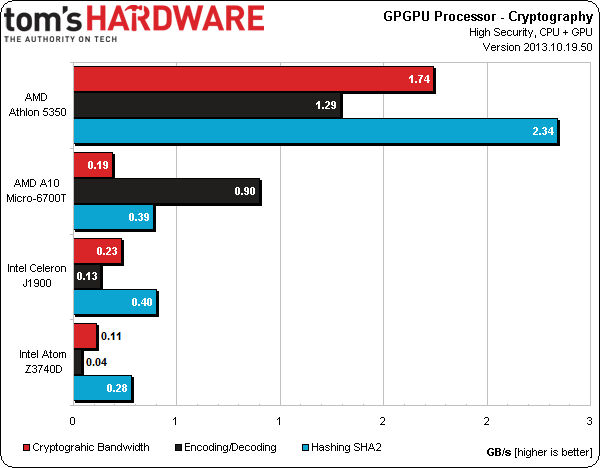Mullins And Beema APUs: AMD Gets Serious About Tablet SoCs
AMD recently introduced us to its Mullins and Beema APUs, which are architecturally similar to Kabini and Temash, but include some power and performance enhancements. We take an early look at a custom form factor and compare to Intel's best effort.
Synthetic Benchmarks
We begin with graphics testing, emphasizing AMD's GCN architecture. The question is whether AMD's design can scale effectively down to a tablet's restrictive power envelope. Is this Radeon-branded engine as effective down at 4.5 W as it is in more complex GPUs?
In the Ice Storm Unlimited test, AMD's A10 Micro-6700T competes against Intel's 10 W Celeron J1900. The Cloud Gate benchmark actually gives Mullins a notable lead.
We keep in mind that the platform and its clocks are configured by AMD. However, the initial numbers still look promising.
How do the Puma+-based cores hold up under the rigors of PCMark 8's Home sub-test?
The benchmark won't install on Dell's Venue 8 Pro, but we come away with insight from Intel's Celeron J1900 all the same.
In the conventional version of Futuremark's synthetic Home suite, the Bay Trail-D platform inches past AMD's custom-built tablet. But with OpenCL support turned on, Mullins achieves parity with Intel's desktop-oriented board.
Onto SiSoftware's Sandra Arithmetic module, where the A10 APU shows up between Intel's Atom Z3740D and Celeron J1900.
Get Tom's Hardware's best news and in-depth reviews, straight to your inbox.
When it comes to GPGPU processing, AMD's Athlon posts the strongest finish, followed by the A10 Micro-6700T in this module's Encoding/Decoding module. It's cryptographic bandwidth and hashing performance trail Intel's Celeron slightly.
Don Woligroski was a former senior hardware editor for Tom's Hardware. He has covered a wide range of PC hardware topics, including CPUs, GPUs, system building, and emerging technologies.
-
Nintendo Maniac 64 ...yeah, I don't think intending to benchmark full-on PC games that aren't even a year old on what is essentially a tablet APU was one of the wisest decisions you guys have made.Reply -
cleeve Reply13193339 said:...yeah, I don't think intending to benchmark full-on PC games that aren't even a year old on what is essentially a tablet APU was one of the wisest decisions you guys have made.
Actually, both Dota2 and Grid2 are well known for having low system requirements, and they represented a great opportunity to compare results to the desktop bay trail and kabini platforms. We would have tested these games regardless, but we would have added more, less demanding titles if we had more time.
-
Nintendo Maniac 64 Hmmm, sounds like an AMD equivalent of an Intel "tick", especially considering that the IPC between Puma+ and Jaguar is unchanged.Reply
Interestingly enough, this would mean that the PS4 and Xbone could use Puma+ cores in the future (with turbo disabled obviously).
-
PreferLinux OK, so where are the power measurements? That is about the most important part of the chip, and is also the part that is missing.Reply -
kyuuketsuki I'm not sure why you decided to benchmark Dota at 1920x1080 instead of 1200x800. You lost the ability to compare against the Venue 8 Pro *and* the results might have been something resembling playable. I'm always of the opinion that game benchmarking should focus around what the product in question (and its competitors) can actually, y'know, play. Seeing graphs of everything being in a range of 1-10 FPS just isn't interesting or particularly useful.Reply
But yeah, I understand the limited time and environment, and the look at Beema and Mullins is greatly appreciated. I'm *still* looking forward to a commercially-available tablet with an AMD SoC in it, since one never materialized with Temash. That Vizio tablet that used AMD was actually pretty nifty, except for using the Z-60(?) which just wasn't up to scratch. It's too bad Vizio seems to be deprecating its tablet efforts, since an update of that tablet with Mullins in it would be worth looking at. -
NoClue_87 Dota2 is very cpu intensive. It's a shame Valve aint interested in suporting mantle for dota 2.Reply -
CaptainTom I seriously cannot wait when 5 years from now I can get mid-range PC gaming in a tablet... The future cannot come soon enough...Reply -
tigger888 HOW is the author of this article NOT amazed that the apu is pushing NEAR 30 frames per second! With the competition only having half... Who pays these guys to write articles..Reply -
de5_Roy looks quite promising. these socs will be in media consumption devices, so i hope you'll include various media playback benches in the review.Reply
the tskin temp and tjmax temp look a bit low for outside use. i wonder if it'll be enough to prevent throttling in actual devices. -
cleeve Reply13193593 said:HOW is the author of this article NOT amazed that the apu is pushing NEAR 30 frames per second! With the competition only having half... Who pays these guys to write articles..
How did you not read the commentary, yet decide comment on it?
The article is very complimentary to the new APU's game performance. What exactly did you expect? Did you want me to write that its the "SUPERBEST GAMING APU EVAR"?
